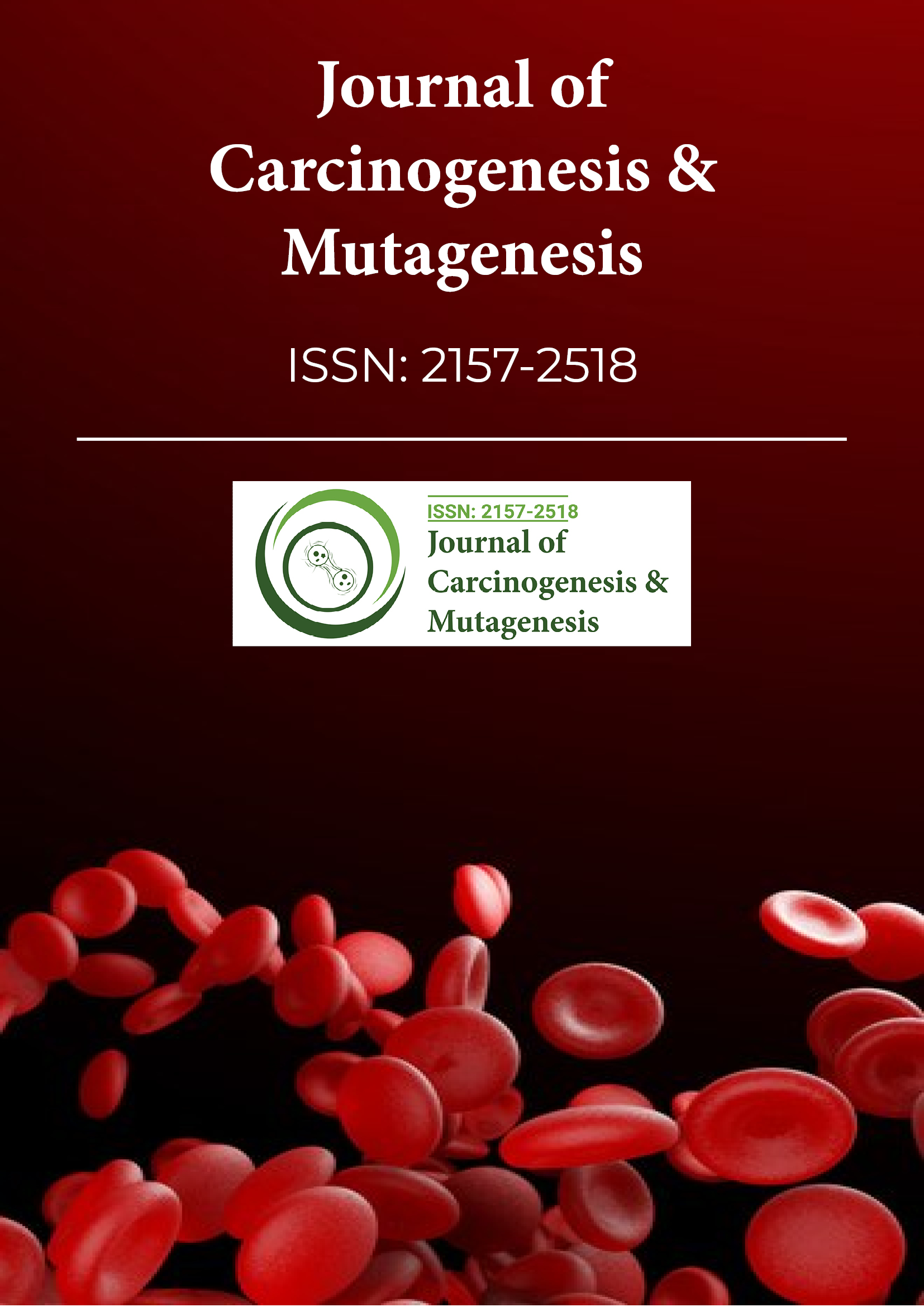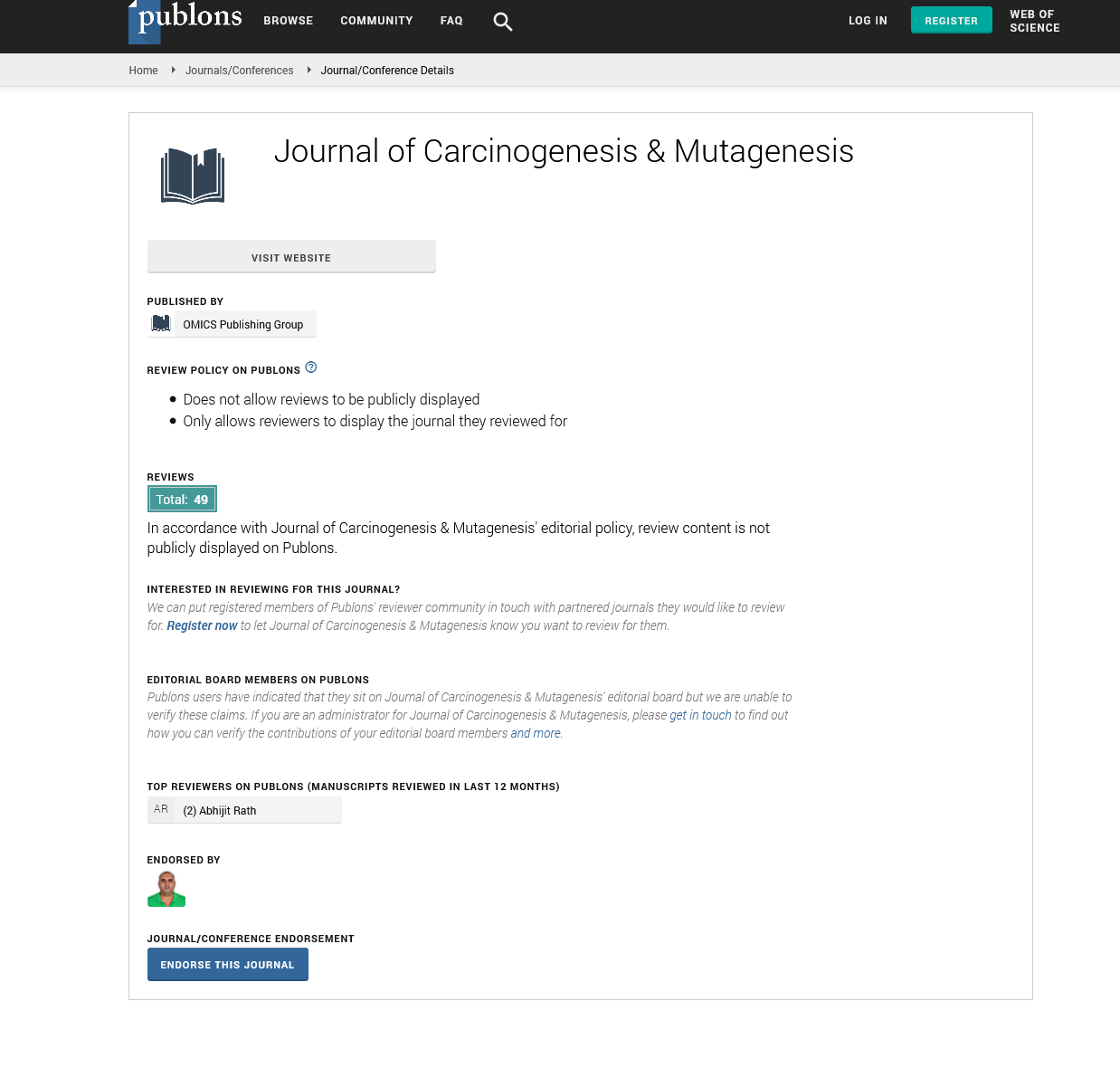Indexed In
- Open J Gate
- Genamics JournalSeek
- JournalTOCs
- Ulrich's Periodicals Directory
- RefSeek
- Hamdard University
- EBSCO A-Z
- OCLC- WorldCat
- Publons
- Geneva Foundation for Medical Education and Research
- Euro Pub
- Google Scholar
Useful Links
Share This Page
Journal Flyer

Open Access Journals
- Agri and Aquaculture
- Biochemistry
- Bioinformatics & Systems Biology
- Business & Management
- Chemistry
- Clinical Sciences
- Engineering
- Food & Nutrition
- General Science
- Genetics & Molecular Biology
- Immunology & Microbiology
- Medical Sciences
- Neuroscience & Psychology
- Nursing & Health Care
- Pharmaceutical Sciences
Commentary - (2025) Volume 0, Issue 0
The Role of DNA Alteration in Genetic Diversity and Biotechnology
Xiaodong Xu*Received: 01-Mar-2025, Manuscript No. JCM-25-28940; Editor assigned: 03-Mar-2025, Pre QC No. JCM-25-28940 (PQ); Reviewed: 17-Mar-2025, QC No. JCM-25-28940; Revised: 24-Mar-2025, Manuscript No. JCM-25-28940 (R); Published: 31-Mar-2025, DOI: 10.35248/2157-2518.25.16.002
Description
DNA alteration refers to any change in the structure or sequence of an organism’s DNA. These changes can occur naturally or be induced artificially, and they play a critical role in biological processes such as evolution, genetic disorders, and biotechnology. Understanding DNA alteration is essential not only in science and medicine but also in agriculture, forensic science, and ethical debates surrounding gene editing.
Naturally occurring DNA alterations are often the result of mutations. A mutation is a change in the nucleotide sequence of DNA, which can happen due to copying errors during cell division, exposure to radiation, chemicals, or even viral infections. These mutations can be classified in several ways, such as point mutations, which involve a single nucleotide change, insertions or deletions of small or large DNA segments, and chromosomal rearrangements that affect the structure of entire chromosomes. While many mutations have no noticeable effects, others can lead to serious health conditions or be beneficial in an evolutionary context.
Not all DNA alterations are harmful. Some drive evolutionary change by introducing new traits that improve an organism’s ability to survive and reproduce. For example, a beneficial mutation in a gene that enhances resistance to a specific disease may become more common in a population over generations. On the other hand, harmful alterations can cause genetic disorders such as cystic fibrosis, sickle cell anemia, or certain cancers. The relationship between DNA changes and health outcomes has led to a greater understanding of how to diagnose, prevent, and potentially treat genetic conditions.
Advances in biotechnology have allowed scientists to intentionally alter DNA in controlled ways. Genetic engineering, for instance, involves the direct manipulation of DNA to produce desired traits. This technology has been widely applied in agriculture to create genetically modified organisms (GMOs), such as crops that are resistant to pests or drought. In medicine, gene therapy is a promising technique that aims to treat or even cure diseases by correcting defective genes or inserting functional ones.
One of the most revolutionary tools in modern DNA alteration is CRISPR-Cas9, a genome-editing technique that allows scientists to cut and modify specific parts of the DNA with high precision. This method has opened the door to possibilities once thought to be science fiction, such as correcting genetic mutations before birth, designing organisms with specific traits, or eliminating certain inherited diseases. While the potential benefits of CRISPR are enormous, the technology also raises ethical concerns, especially regarding its use in human embryos and the risk of unintended consequences.
Conclusion
The study of DNA alteration has not only deepened our knowledge of biology but has also transformed many aspects of modern life. In forensic science, DNA profiling relies on small differences in individuals’ DNA sequences to identify suspects and solve crimes. In ancestry testing, companies use genetic variations to trace family histories and geographic origins. In synthetic biology, researchers are designing entirely new sequences of DNA to create novel biological systems.
Citation: Xu X (2025). The Role of DNA Alteration in Genetic Diversity and Biotechnology. J Carcinog Mutagen. 16:002.
Copyright: © 2025 Xu X, et al. This is an open-access article distributed under the terms of the Creative Commons Attribution License, which permits unrestricted use, distribution, and reproduction in any medium, provided the original author and source are credited.


